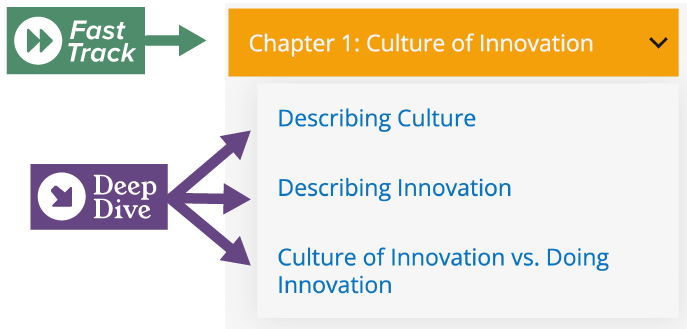

This is a Deep Dive page. Select the chapter for the Fast Track
Understanding the Five Organizational Elements that Affect Culture
Culture develops in an airport naturally over time. It often reflects a combination of an airport's leadership style and its overall strategic mission, which is also heavily influenced by its leaders. A lot of research on culture change focuses on how leaders can transform an organization's culture. But what if leaders do not want to change? Can others in the organization make an impact?
One of the case study airports demonstrates how many aspects or elements of an organization can contribute to its culture's transformation. Staff at this airport would describe its culture as toxic, full of fear and intimidation. Mistakes were not tolerated, and staff that happened to make them were subjected to ridicule or fired. As a result, the entire airport staff dreaded coming to work; they were stressed out and went into survival mode while there, hiding at their desks and trying to avoid making any mistakes.
However, when a new leader arrived, this person immediately started helping the staff recover. This leader encouraged humor to relieve the tension in the office and to help staff feel at ease so they would start talking and sharing ideas with one another. This person also developed a flatter organizational structure, and staff stepped up and shared their voices. The leader further supported staff members by encouraging them to seek educational experiences and explore and share new ideas without fear. This leader also spent time building trust with each employee so they would all feel safe sharing their opinions and brought them together to collaborate in regular all-hands meetings. The organization then crafted new strategic objectives and messaging to prioritize an environment of learning and growing. Processes were also developed that made it acceptable for things to not go as planned on the first try. While the new leader did start the airport's cultural shift to innovation, each person played a key role in making this cultural transformation.
This case study demonstrates what the bulk of the research and literature reviews supports: Culture can be changed, and cultural change can happen when one or more of five key organizational elements, shown in Figure D2.1, are impacted.

Figure D2.1: Organizational Elements.
Each of the five elements impacts culture in specific ways. For instance:
- Leaders play a major role. They can shape an organization into being open and inclusive, or they can drive it to be siloed and standardized. It is important to recognize that a leader's management style and personality can influence many other elements in the organization.
- Staff can also shape culture by the attitudes and mindset they bring to the organization. They can value change and look for new ideas, or they can remain in their comfort zones, settling with the status quo and unopen to change.
- Strategy and policy determine what values are prioritized at an airport. They can promote values like cooperation or competition that can drive the organization to collaborate or work independently, respectively.
- Organizational structure reinforces the organizational style of the airport. It can be more hierarchical to reinforce the importance of the chain of command, or it can be a flatter structure that reinforces collaboration.
- Processes and procedures demonstrate how daily work should be carried out. Structuring these to align with and reward positive behaviors will encourage positive change.
It cannot be overstated that people (leadership and staff) are critical to the success or failure of a shift in culture; culture is all about people, and only people can make change happen. But this begs a question: Which people-related element is most important? Or, more specifically, which element-leaders or staff-needs to first be on board with the need for a culture shift? The answer: It depends.
Leadership is the clearer answer since leaders have more power in decision-making regarding the other elements (i.e., organizational structure, process and procedure, and strategy and policy). This means they can more quickly make structural changes that foster the development of an improved culture. On the other hand, if enough staff members desire a culture change when leaders are not yet on board, they can take action to start making it happen through their behaviors. Good leaders can be brought on board to support and even drive the change. However, this can be risky for staff members, and it is important to approach this carefully and respectfully.
Leadership is also key to a lasting culture shift. When the culture does truly shift in the right direction, this can create resiliency to withstand any change that the airport organization faces. However, if a change results in new leadership with an approach and style that discourages the culture of innovation, then over time the culture will likely revert, and those who value the culture of innovation will consider leaving the organization. Although, if previous leaders put strategies, policies, and other structures in place to help innovation thrive, these will continue to provide value. Hopefully new leaders will see this value and adopt these principles themselves.
Continue reading this chapter to learn more about how people can drive cultural change.



